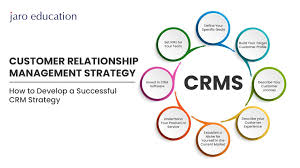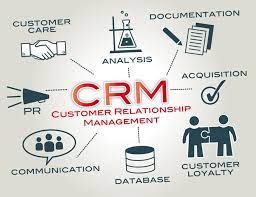Introduction
In today’s highly competitive and customer-centric business landscape, maintaining strong relationships with clients is crucial to sustained success. This is where a CRM program—Customer Relationship Management software—plays an essential role. A well-implemented CRM program helps organizations manage interactions with current and potential customers, streamline processes, and improve profitability. This article delves into the world of CRM programs, exploring their functionalities, types, benefits, implementation strategies, and the future of CRM in a digital-first economy.
Understanding CRM: The Foundation of Customer Success
CRM stands for Customer Relationship Management, a technology designed to help businesses manage and analyze customer interactions throughout the customer lifecycle. The ultimate goal of a CRM program is to improve business relationships, assist in customer retention, and drive sales growth.
A CRM program provides a centralized platform where businesses can store customer information, track interactions, manage leads, automate marketing efforts, and support sales activities. From small startups to large enterprises, CRM programs cater to a broad spectrum of industries.
Core Features of a CRM Program
- Contact Management: Centralized repository of customer data including names, addresses, phone numbers, and interaction history.
- Lead Management: Helps in capturing, scoring, and nurturing leads until they are sales-ready.
- Sales Automation: Automates repetitive sales tasks like follow-ups, quote generation, and sales reporting.
- Marketing Automation: Manages marketing campaigns across channels like email, social media, and ads.
- Customer Support Management: Tracks customer service requests and improves issue resolution.
- Analytics and Reporting: Provides detailed insights into customer behavior, sales trends, and campaign performance.
- Integration Capabilities: Integrates with other software like ERP, email, or communication tools.
- Mobile Access: CRM on-the-go via mobile apps for field agents or remote teams.
Types of CRM Programs
- Operational CRM: Focuses on automating customer-facing processes like sales, marketing, and customer service.
- Analytical CRM: Analyzes customer data to gain insights and make data-driven decisions.
- Collaborative CRM: Facilitates communication between different departments (e.g., sales, marketing, support).
- Strategic CRM: Long-term approach that focuses on customer-centric business strategy.
Popular CRM Programs in the Market
- Salesforce: Cloud-based, highly customizable CRM with robust features for enterprises.
- HubSpot CRM: Free CRM with essential sales and marketing tools, great for small businesses.
- Zoho CRM: Affordable and feature-rich with strong automation and analytics.
- Microsoft Dynamics 365: Offers CRM capabilities integrated with Microsoft Office tools.
- Pipedrive: Sales-focused CRM that is intuitive and easy to use.
- Freshsales by Freshworks: AI-powered CRM tailored for fast-growing companies.
Benefits of Implementing a CRM Program
- Improved Customer Relationships: Personalize interactions and build lasting relationships.
- Increased Sales Efficiency: Identify hot leads, close more deals, and reduce sales cycles.
- Enhanced Customer Retention: Anticipate needs and proactively address issues.
- Better Data Management: Eliminate data silos and ensure data consistency across the organization.
- Insightful Decision-Making: Leverage analytics for strategic business decisions.
- Boosted Collaboration: Facilitate cross-functional teamwork with centralized data.
- Higher Productivity: Automate routine tasks, allowing teams to focus on high-value activities.
Steps to Successfully Implement a CRM Program
- Define Objectives: Set clear goals such as increasing customer satisfaction or improving lead conversion.
- Choose the Right CRM: Consider factors like business size, budget, and feature requirements.
- Get Buy-In from Stakeholders: Involve sales, marketing, and customer service teams early in the process.
- Customize and Integrate: Tailor the CRM to meet specific business workflows and integrate with existing systems.
- Train Users: Offer comprehensive training and resources to ensure user adoption.
- Monitor and Optimize: Continuously track usage and outcomes to refine CRM strategies.

Challenges in CRM Program Implementation
- User Resistance: Change management is key to overcoming hesitations.
- Data Migration Issues: Transferring legacy data can be complex.
- Lack of Customization: A one-size-fits-all approach may not work.
- Underutilization of Features: Many organizations use only a fraction of their CRM’s capabilities.
- Integration Hurdles: Ensuring seamless data flow with other tools requires planning.
Industry-Specific CRM Use Cases
- Retail: Personalized promotions and loyalty programs.
- Healthcare: Patient communication and treatment follow-ups.
- Education: Enrollment tracking and student engagement.
- Real Estate: Property listings, client scheduling, and follow-ups.
- Financial Services: Portfolio management and compliance tracking.
Future Trends in CRM Programs
- Artificial Intelligence: Predictive analytics, chatbots, and intelligent recommendations.
- Voice Integration: CRM systems that integrate with voice assistants like Alexa or Siri.
- Augmented Reality (AR): For immersive customer experiences in retail and real estate.
- Hyper-Personalization: Granular segmentation for tailored customer journeys.
- Blockchain for CRM: Secure, transparent, and tamper-proof customer data handling.
- Sustainability Metrics: Tracking eco-conscious customer preferences.
CRM for Small Businesses vs. Enterprises
- Small Businesses:
- Look for ease of use, affordability, and essential features.
- Often opt for cloud-based CRMs with minimal IT support.
- Enterprises:
- Require high customization, scalability, and integration.
- May need on-premise deployment and advanced analytics.
Measuring CRM Program Success
- Customer Retention Rate
- Sales Conversion Rate
- Average Deal Size
- Customer Lifetime Value (CLV)
- Lead Response Time
- Net Promoter Score (NPS)
- User Adoption Rate
Conclusion
A CRM program is no longer a luxury but a necessity for businesses aiming to thrive in a customer-driven marketplace. By organizing customer data, streamlining processes, and enhancing collaboration, CRM programs empower companies to deliver exceptional customer experiences. Whether you’re a solopreneur or a Fortune 500 company, selecting and effectively using a CRM program can transform how you connect with and serve your clients. With evolving technologies and growing customer expectations, the future of CRM promises even greater innovation and impact.
By investing in the right CRM strategy today, organizations position themselves for long-term customer satisfaction, loyalty, and profitability in an increasingly digital and competitive world.

